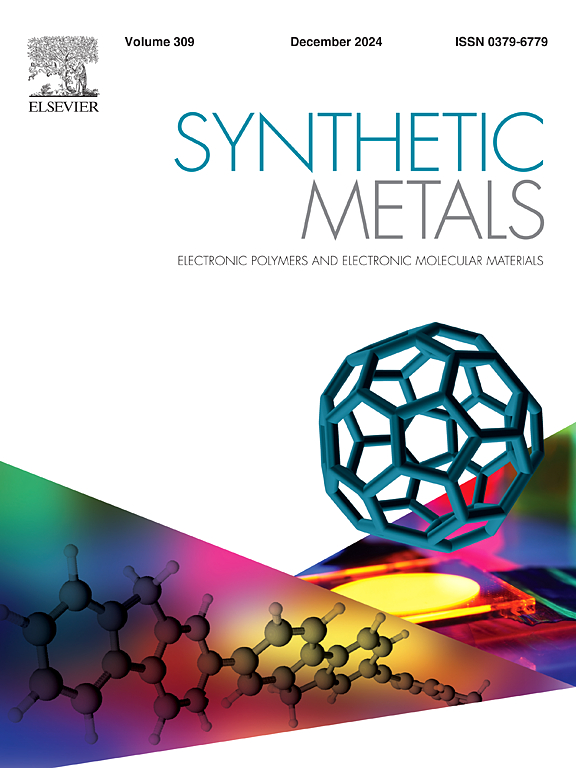Electrodeposition of hierarchical NiZn layered double hydroxide nanosheet arrays on polyaniline for enhanced supercapacitor performance
IF 4
3区 材料科学
Q2 MATERIALS SCIENCE, MULTIDISCIPLINARY
引用次数: 0
Abstract
Current research in energy storage is primarily focused on innovating affordable electroactive materials with superior specific capacitance. We introduce a two-step, successful approach for developing hierarchical, binder-free arrays of NiZn-layered double hydroxide (LDH) nanosheets on polyaniline-coated copper sheet. The NiZn-LDH/PANI/Cu electrode material's structural and surface properties were analyzed using techniques such as FESEM, HRTEM, XPS, and XRD. In a two-electrode supercapacitor (SC) setup, electrochemical evaluations revealed the outstanding performance of the electrode. The sample achieved a maximum energy density of 32 Wh kg−1, a specific capacitance of 358.75 F g−1, and impressive cycling stability, maintaining 90 % of its capacitance after 5000 cycles. These findings highlight the potential of the NiZn-LDH/PANI/Cu SC as a viable energy storage solution. By leveraging the synergistic effects of the composite materials, this approach not only enhances energy density and capacitance but also ensures long-term stability and reliability. Ultimately, this work contributes to the development of advanced SC technologies that can meet the increasing demands for efficient and sustainable energy storage systems.
聚苯胺上电沉积分层NiZn层状双氢氧化物纳米片阵列以增强超级电容器性能
目前的储能研究主要集中在创新具有优越比电容的经济实惠的电活性材料上。我们介绍了一种两步的方法,成功地在聚苯胺涂覆的铜片上制备了nizn层状双氢氧化物(LDH)纳米片的分层,无粘结剂阵列。采用FESEM、HRTEM、XPS、XRD等分析了NiZn-LDH/PANI/Cu电极材料的结构和表面性能。在双电极超级电容器(SC)设置中,电化学评价显示了电极的优异性能。该样品的最大能量密度为32 Wh kg−1,比电容为358.75 F g−1,循环稳定性令人印象深刻,在5000次循环后保持90% %的电容。这些发现突出了NiZn-LDH/PANI/Cu SC作为一种可行的储能解决方案的潜力。通过利用复合材料的协同效应,这种方法不仅提高了能量密度和电容,而且确保了长期的稳定性和可靠性。最终,这项工作有助于开发先进的SC技术,以满足对高效和可持续能源存储系统日益增长的需求。
本文章由计算机程序翻译,如有差异,请以英文原文为准。
求助全文
约1分钟内获得全文
求助全文
来源期刊

Synthetic Metals
工程技术-材料科学:综合
CiteScore
8.30
自引率
4.50%
发文量
189
审稿时长
33 days
期刊介绍:
This journal is an international medium for the rapid publication of original research papers, short communications and subject reviews dealing with research on and applications of electronic polymers and electronic molecular materials including novel carbon architectures. These functional materials have the properties of metals, semiconductors or magnets and are distinguishable from elemental and alloy/binary metals, semiconductors and magnets.
 求助内容:
求助内容: 应助结果提醒方式:
应助结果提醒方式:


